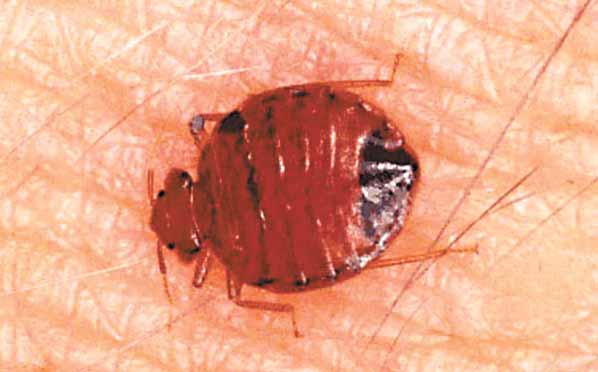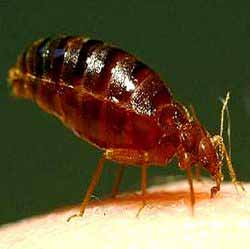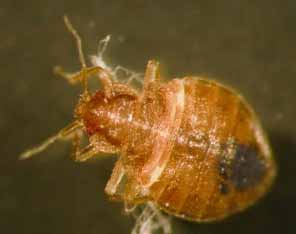Far too many people believe that when you get bed bugs, your only solution is to get rid of your mattress and box springs. That is a false rumor fueled by panic and hysteria. The truth is simpler and cheaper.
When a pest-control company treats your house for bed bugs with modern pesticides, it can take six to eight weeks to eliminate them. During that time, you dont want to get bitten, but you dont need to throw away your mattresses, either. The solution is a mattress cover that seals the bed bugs inside and prevents them from escaping the pesticides that were put on your mattress and box springs to kill them.
Whether youre dealing with a bed bug infestation or just want to take a proactive stance against them, weve got the information you need to find a great bed bug mattress cover that will give you peace of mind.
The only mattress protection that keeps out bed bugs is a true mattress encasement that completely encloses the entire mattress top, bottom, and the four sides. Any other mattress cover is only for spills or dust mites. For bed bugs, you need six-sided protection.
The only mattress protection that keeps out bed bugs is a true mattress encasement that completely encloses the entire mattress top, bottom, and the four sides. Any other mattress cover is only for spills or dust mites. For bed bugs, you need six-sided protection.
Installing a mattress cover means putting the entire mattress inside the mattress cover and zipping it closed. This is why mattress covers are sometimes called mattress encasements. Queen, king, and California king mattresses are quite heavy. Putting a mattress cover on one of those is a two- or three-person job. Be prepared for that.
Stretchable fabrics will ensure a tighter fit that wont move or rumple beneath you when youre sleeping. Due to the plastic used in their construction, mattress covers dont always stretch. The ones that do will note that in the description.
"Bed bugs are white when they are young. They only gain their red color after feeding on blood."
STAFF
BestReviews
There is no state or federal regulation defining what hypoallergenic is or means. According to the best medical practices, it means a fabric or substance that wont cause or trigger allergies. Mattress covers use a wide variety of fabrics and materials to meet this definition. The most common material is plastic or another synthetic material. Tightly woven fabrics, such as cotton that prevents dust mites from penetrating the weave, are considered hypoallergenic. Dust mites are smaller than bed bugs, so any mattress cover that is hypoallergenic will prevent the bed bugs from moving through the material.
The weak point in any mattress cover is the zipper specifically the endpoint of the zipper. If there is going to be any gap, that is where it will be. To compensate, manufacturers will put Velcro or some other cover over the end of the zipper when it closes.
Plastic sheets or covers make noise when you lie on them or toss and turn during the night. Because mattress covers are designed to address a wide range of issues over and above just bed bugs, many of them will be made of plastic or have plastic undercoating. Some dont have any plastic, relying instead on a fine weave to stop the bed bugs from passing through.
Any mattress cover that relies on plastic to stop bed bug movement or catch spills is going to be hotter to sleep on than non-plastic ones. Manufacturers will put terry cloth or some other fabric on top of the plastic to let it breathe and stay cool, but heat will always be an issue when plastic is involved.
Its important to be able to clean the mattress cover on a regular basis. Some old mattress covers cant be machine washed because of the plastic in them; they must be dry cleaned. Some have plastic that can be machine washed and hung out to dry or dried on very low heat. Pay close attention to the cleaning instructions in order to extend the life of your mattress cover.
Did you know?
Bed bugs can survive for six or eight months without feeding.
STAFF
BestReviews
Inexpensive: Low-priced mattress covers between $20 and $30 usually have five-year limited warranties or highly restrictive guarantees. They are made of plastic, PVC, and other synthetic materials that are very waterproof but also make a lot of crinkling noises. There will be some heat issues to deal with, too.
Mid-range: A mattress cover in the medium price range between $30 and $45 will have less plastic and crinkle to it. Water-resistant materials, such as tightly woven polyester, are common, as are ten-year warranties. These mattress covers will make an effort to address the heat issues.
Expensive: Most mattress covers above $45 have a ten-year warranty and a high thread count to help prevent bed bug penetration. These products tend to be quiet and cool.
Pull the mattress halfway off the bed to begin putting the mattress cover on the end of it. Once the cover has been pulled all the way on, tilt the mattress up so it is standing on the floor, and pull the mattress cover over the rest of the mattress.
Dont close the zippers until the mattress cover is completely on the mattress. Check it for pulls or wrinkles. Once it is smooth and flat on the mattress, then you can close the zippers.
Use a mattress cover on the box springs as well as the mattress. Bed bugs often live in the box springs before they start living in the mattress.
Prior to installing the mattress covers, make sure the mattress and box springs have been treated with a bed bug insecticide and an IGR (insect growth regulator). Make sure your pest control company has used both. The mattress cover will then trap them inside with the pesticides.
Other mattress covers we looked at include the HOSPITOLOGY PRODUCTS Sleep Defense System, which is specifically billed as a mattress encasement. It has an extra-soft polyester knit covering a polyurethane waterproof layer. One nice feature we liked was the zippers on three sides.
Another product we appreciated was the PlushDeluxe Premium Zippered Mattress Encasement. This product is also specifically called an encasement as opposed to a cover. It is advertised as being free of vinyl, PVC, and phthalate. It has a terry cloth exterior.
Q. Do bed bugs live in the mattress?
A. This is a common misunderstanding. Bed bugs will live or nest in mattresses mainly in the later stages of an infestation when population pressure begins forcing them out of their normal habitat. They like to live within 10 to 15 feet of their food source (you), so they will nest behind the baseboards at the head of the bed, around the cracks and crevices near the foot of the bed, or within bedside tables. They also frequent windows and window shades and headboards, footboards, and box springs. Only after their population grows will they begin living in the seams of the mattress.
Q. Can mattress encasements be dried in the dryer?
A. The only good answer is, Yes, but ... Yes, you can dry them in the dryer, but you should only dry them on low heat or the gentle cycle. The tumbling action is hard on them regardless of which cycle you use, so the best solution is to hang them from a clothesline outside.
Q. What is the difference between a mattress cover and a mattress encasement?
A. That depends on the manufacturer. A mattress encasement always means a zippered bag that covers the entire mattress on the top, bottom, and sides. When the zipper is closed, it completely seals off the mattress. A mattress cover can be the same thing, or it can simply be a covering for the top of the mattress to prevent leaks or spills from soaking the mattress. Read the fine print to be sure.
Q. What diseases do bed bugs carry?
A. Bed bugs arent known to be vectors for any diseases at all. Their bites are painless when they bite you, but after you wake up, they may begin itching. Bed bugs are unpleasant and icky, but they are not a direct danger to human health.
Original post:
5 Best Bed Bug Mattress Covers - Oct. 2022 - BestReviews

 Residence
Residence  Location
Location 
 Bed bugs are small, oval, non flying insects that belong to the insect familyCimicidae, which includes three species that bite people. Adult bed bugs reach 5-7 mm in length, while nymphs (juveniles) are as small as 1.5 mm. Bed bugs have flat bodies and may sometimes be mistaken forticksor small cockroaches. Bed bugs feed by sucking blood from humans or animals. Adult bed bugs are reddish brown in color, appearing more reddish after feeding on a blood meal. Nymphs are clear in color and appear bright red after feeding. The wings of bed bugs are vestigial, so they cannot fly.
Bed bugs are small, oval, non flying insects that belong to the insect familyCimicidae, which includes three species that bite people. Adult bed bugs reach 5-7 mm in length, while nymphs (juveniles) are as small as 1.5 mm. Bed bugs have flat bodies and may sometimes be mistaken forticksor small cockroaches. Bed bugs feed by sucking blood from humans or animals. Adult bed bugs are reddish brown in color, appearing more reddish after feeding on a blood meal. Nymphs are clear in color and appear bright red after feeding. The wings of bed bugs are vestigial, so they cannot fly. 
 Since bed bugs don't fly, and not able to walk very far on their own, these bugs rely on us to move them from one place to another. Rooms generally become infested because bed bugs are carried into the room on our belongings. The bugs can hide themselves in pillows, blankets, sleeping bags, backpacks, towels, clothing, and so forth, when transported from an infested to an uninfested room.
Since bed bugs don't fly, and not able to walk very far on their own, these bugs rely on us to move them from one place to another. Rooms generally become infested because bed bugs are carried into the room on our belongings. The bugs can hide themselves in pillows, blankets, sleeping bags, backpacks, towels, clothing, and so forth, when transported from an infested to an uninfested room.  Bed bugs were originally brought to the
Bed bugs were originally brought to the
 Bed bugs are small wingless insects that feed solely upon the blood of warm-blooded animals. Bed bugs and their relatives have evolved as nest parasites. Certain kinds inhabit bird nests and bat roosts and await the return of their hosts; others have adapted well to living in the '˜nests' (homes) of people. Hatchling bed bugs are about the size of a poppy seed, and adults are about 1/4 of an inch in length. From above they are oval in shape, but are flattened from top to bottom.
Bed bugs are small wingless insects that feed solely upon the blood of warm-blooded animals. Bed bugs and their relatives have evolved as nest parasites. Certain kinds inhabit bird nests and bat roosts and await the return of their hosts; others have adapted well to living in the '˜nests' (homes) of people. Hatchling bed bugs are about the size of a poppy seed, and adults are about 1/4 of an inch in length. From above they are oval in shape, but are flattened from top to bottom. Bed bugs can infest all kinds of different places in your bedroom. Most often they're in the mattress - in the seams, the box springs, or sometimes the linens. However, they can really be anywhere near where people sleep - furniture within crawling distance, carpet, books, phones - they've been found in all kinds of random things, because they don't create a nest, they just hide somewhere.
Bed bugs can infest all kinds of different places in your bedroom. Most often they're in the mattress - in the seams, the box springs, or sometimes the linens. However, they can really be anywhere near where people sleep - furniture within crawling distance, carpet, books, phones - they've been found in all kinds of random things, because they don't create a nest, they just hide somewhere. Over 80% of bed bug infestations are found in the mattress or box spring! You can be pro-active and take preventative steps to avoid bed bug infestations in your home by protecting your bedding. The problem with bed bugs is that they infiltrate every aspect of your family's life. Even the most basic necessity, a good night's rest, can no longer be taken for granted. With the rapid increase in bed bug infestation, bed time is now fraught with anxiety. Read the tips below and learn what steps to take to protect your home and family.
Over 80% of bed bug infestations are found in the mattress or box spring! You can be pro-active and take preventative steps to avoid bed bug infestations in your home by protecting your bedding. The problem with bed bugs is that they infiltrate every aspect of your family's life. Even the most basic necessity, a good night's rest, can no longer be taken for granted. With the rapid increase in bed bug infestation, bed time is now fraught with anxiety. Read the tips below and learn what steps to take to protect your home and family.  And in cities like New York, where neighbors are often separated only by bricks and mortar, one person's infestation is everybody's problem, since bed bugs can crawl through walls and along wiring and pipes, and hitchhike on clothing, furniture, luggage and more. In this city of 8.3 million, it seems as if everyone has a bed bug story. Just ask Gale A. Brewer, a self-appointed bed bug evangelist and a City Council member from the Upper West Side. She prodded the Mayor's office to convene a bed bug advisory committee last fall, after years of what she and others felt were woeful public policy inadequacies in the face of the relentless advances of what some have called 'œthe pest of the century.' (The committee '” entomologists, civic policy experts and advocates for children, the elderly and others '” will issue its recommendations next month.)
And in cities like New York, where neighbors are often separated only by bricks and mortar, one person's infestation is everybody's problem, since bed bugs can crawl through walls and along wiring and pipes, and hitchhike on clothing, furniture, luggage and more. In this city of 8.3 million, it seems as if everyone has a bed bug story. Just ask Gale A. Brewer, a self-appointed bed bug evangelist and a City Council member from the Upper West Side. She prodded the Mayor's office to convene a bed bug advisory committee last fall, after years of what she and others felt were woeful public policy inadequacies in the face of the relentless advances of what some have called 'œthe pest of the century.' (The committee '” entomologists, civic policy experts and advocates for children, the elderly and others '” will issue its recommendations next month.) 










